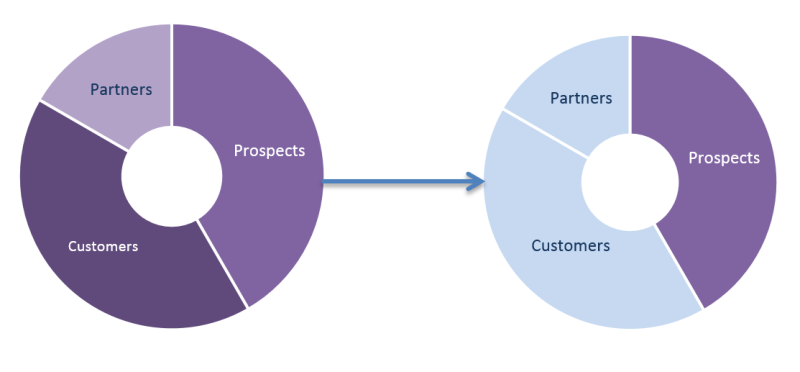Tips for Building A Priority Account List For B2B Account-Based Marketing
- Fahad H

- Oct 29, 2015
- 3 min read
If you’ve been paying attention to the marketing trade pubs lately or talking to other B2B marketers, you’ve probably noticed a significant trend happening: the rise of
Account-Based Marketing (ABM).
Various research studies show that ABM is on fire. More B2B marketers are aware of ABM; more B2B marketers are using ABM and more B2B marketers are having success with ABM.
According to ITSMA, 84 percent of marketers say that ABM delivers higher ROI than any other marketing approach. SiriusDecisions states that more than 60 percent plan to invest in ABM technology over the next year, and a recent Demand Metric report shows that 96 percent of B2B companies believe that ABM has an impact on marketing’s success.
ABM is gaining traction for a good reason. Not only does it drive strong business results, it also allows marketers to connect marketing programs from awareness all the way through pipeline and closed/won business.
More and more B2B marketers are starting to think about how they can implement ABM at their organizations.
But a lot of CMOs and other marketing leaders I talk to are stumped by one of the first, essential steps in ABM: how to choose the accounts to focus on.
Remember: ABM Is A Joint Effort
The most important thing to keep in mind is that ABM is a team sport. It has to be a joint effort between the marketing and sales teams.
And that includes selecting your target accounts. The collaboration between these teams starts with understanding your business goals.
Specifically, what companies are most important to achieving your revenue for the year? Who are the 20 percent that are going to drive 80 percent of our results?
Typically, this is some combination of customers and prospects — and for certain companies, it can also include partners.
I’m going to focus on selecting the right prospects, since customers are more straightforward and only a minority of companies include partners in their target account list.

How To Select The Right Prospects
There are a few different approaches you can take to select the prospects you want to include in your target account list.
Some companies will start from the ground up and use sophisticated predictive analytics to identify the target accounts most likely to purchase their products. That works for some companies, but it’s not for everyone.
For a lot of companies, a simpler approach is to identify the vertical industries the sales and marketing teams are already targeting.
Do you focus on Financial Services, Manufacturing, Pharma or Retail? Then these should form the basis of your target account list.
Another approach is to understand how your sales team is aligned. Do they have a set of named or strategic accounts? Then you’ll likely include them in your target account list.
You’ll also want to talk directly to the account reps and find out if there are any accounts in their patch that they feel should be included — either because they have done business with the account before or have an existing relationship with some of the decision makers.

Segment The Accounts To Customize The Message
Next, you’ll want to segment the accounts on your target list so you can customize your message to them. There are many ways to do that.
Certainly, segmenting by vertical is one of the more common approaches. But you can also do it by company size — enterprise vs. mid-market vs. SMB.
Some of our customers even segment by accounts in which their competitors are installed, so they can create “hijack” campaigns to win the business. If you have that type of account intelligence, it can be an incredibly powerful approach.
One of the most important things that I tell both customers and prospects is that ABM is NOT rocket science.
Sure, there are a lot of sophisticated approaches out there. But getting started, even with things like selecting your target accounts, can be pretty straightforward.
In the end, the business results you’ll achieve with ABM will make you look like a marketing genius.








Comments